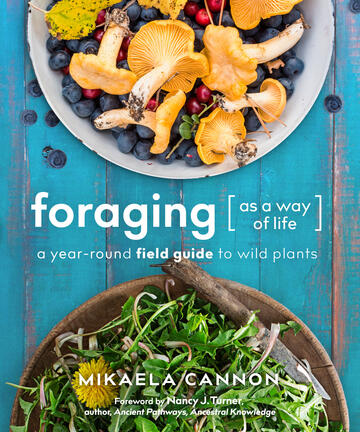
Foraging as a Way of Life
A Year-Round Field Guide to Wild Plants
Find connection with the land and feed your family locally, seasonally, and sustainably
La description
Find connection with the land and feed your family locally, seasonally, and sustainably
Nourish your family from nature's pantry. Foraging as a Way of Life documents twelve months of wildcrafting, featuring five different plants each month for a full year of abundant, local, and seasonal eating. Enhance your sense of self-sufficiency while increasing food security, protecting habitat, and connecting with the land.
Full-color and lavishly illustrated, this accessible, in-depth resource features:
- Accurate and detailed descriptions of herbs, mushrooms, berries, and other wild plants to avoid confusion and inspire confidence when determining plant identification.
- Foraging recipes for remedies, tonics, syrups, and unique handcrafted dishes incorporating wild ingredients—feast on rosehip soup with pan-fried dandelion flowers, followed by birch- bark cookies or chicory chocolate bars.
- Extensive guidance for safe processing or consumption of each species, including cautions, lookalikes, and tips for sustainable harvesting.
Drawing on the author's field experience and her study of herbalism and ethnobotany, Foraging as a Way of Life is designed to inspire readers to share the exuberance and joy of wild foods while finding nourishment and connection in their local fields or forests. A must for every gardener who would like to gather dinner while weeding, for those wishing to learn sustainable harvesting while hiking, or for anyone who wants to create healthy, foraged meals while living lightly on the planet.
Reviews
Mikaela Cannon brings a combination of personal experience and dedicated research to her engaging profiles of edible species. With detailed descriptions and photos, she brings to life native species special to western North America.
—Jared Rosenbaum, CERP, author, Wild Plant Culture: A Guide to Restoring Native Edible and Medicinal Plant SpeciesWhat sets this foraging guide apart from others is that it is arranged by months and seasons to direct you to the best plants and mushrooms to forage at any time of the year! I appreciate the clearly indicated caution boxes and "similar species/look-alikes" sections provided for each entry. This will be a fun book to plan my next foraging trip with.
—Jeanine Davis, associate professor of horticulture, North Carolina State University; author, Growing and Marketing Ginseng, Goldenseal and other Woodland Medicinals; and co-owner, Our Tiny FarmMikayla Cannon's passion for harvesting nature's abundance has yielded a comprehensive guide to foraging throughout the year. Beautiful photographs, detailed profiles, and numerous recipes make this book an exciting guide to reclaiming a naturally healthful diet.
—Darrell E. Frey, Three Sisters Farm, and author, Bioshelter Market Garden and The Food Forest HandbookForaging truly is a way of life for Mikaela Cannon, and this book captures her meticulously researched knowledge, practical experimentation, and deep respect for the earth and its Indigenous knowledge-keepers. It is beautifully illustrated, and includes recipes, medicinal uses, personal stories, detailed plant descriptions, and wise precautions.
—Remy Rodden, biologist, award-winning envirosinger, and environmental educator www.remyrodden.com